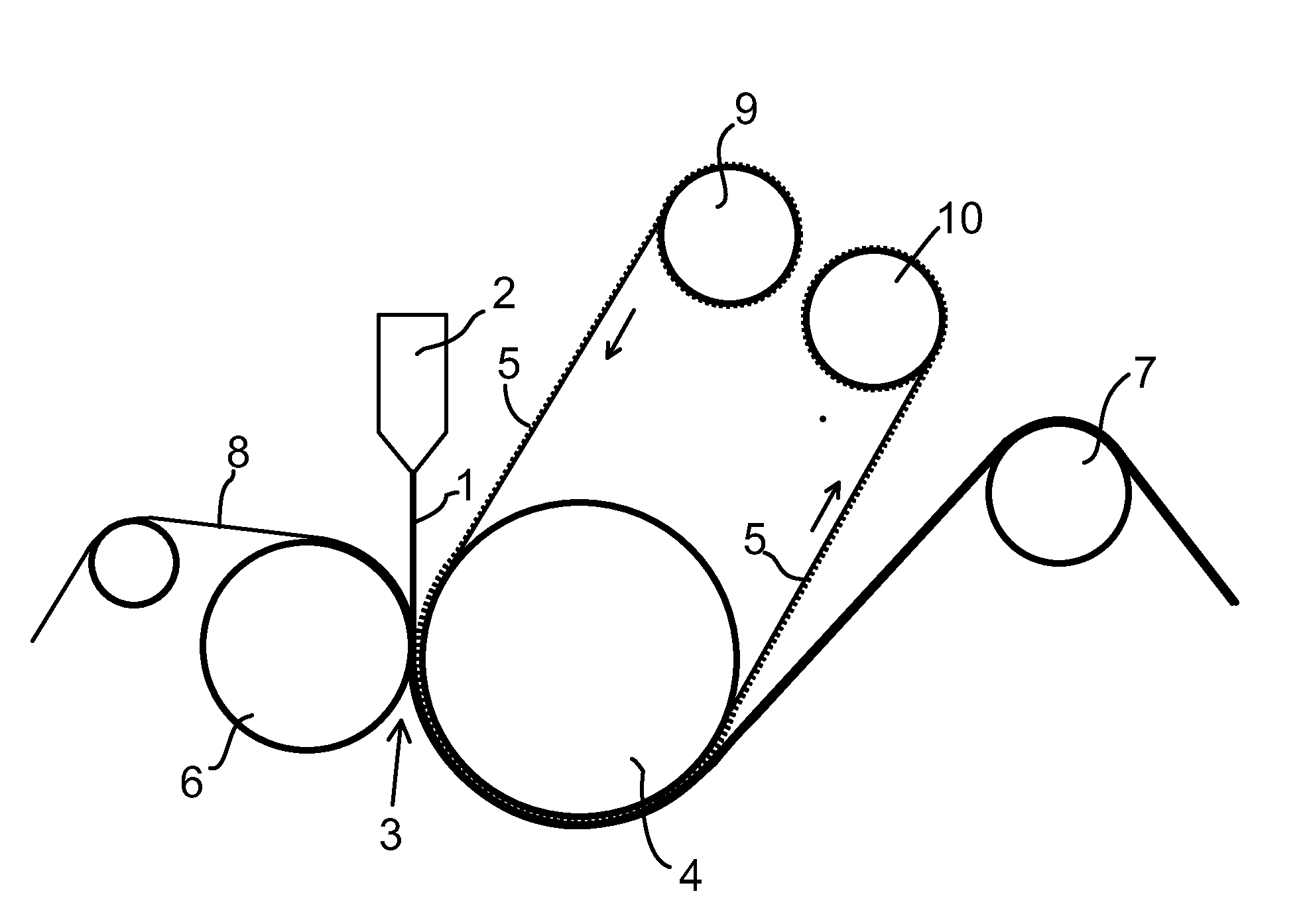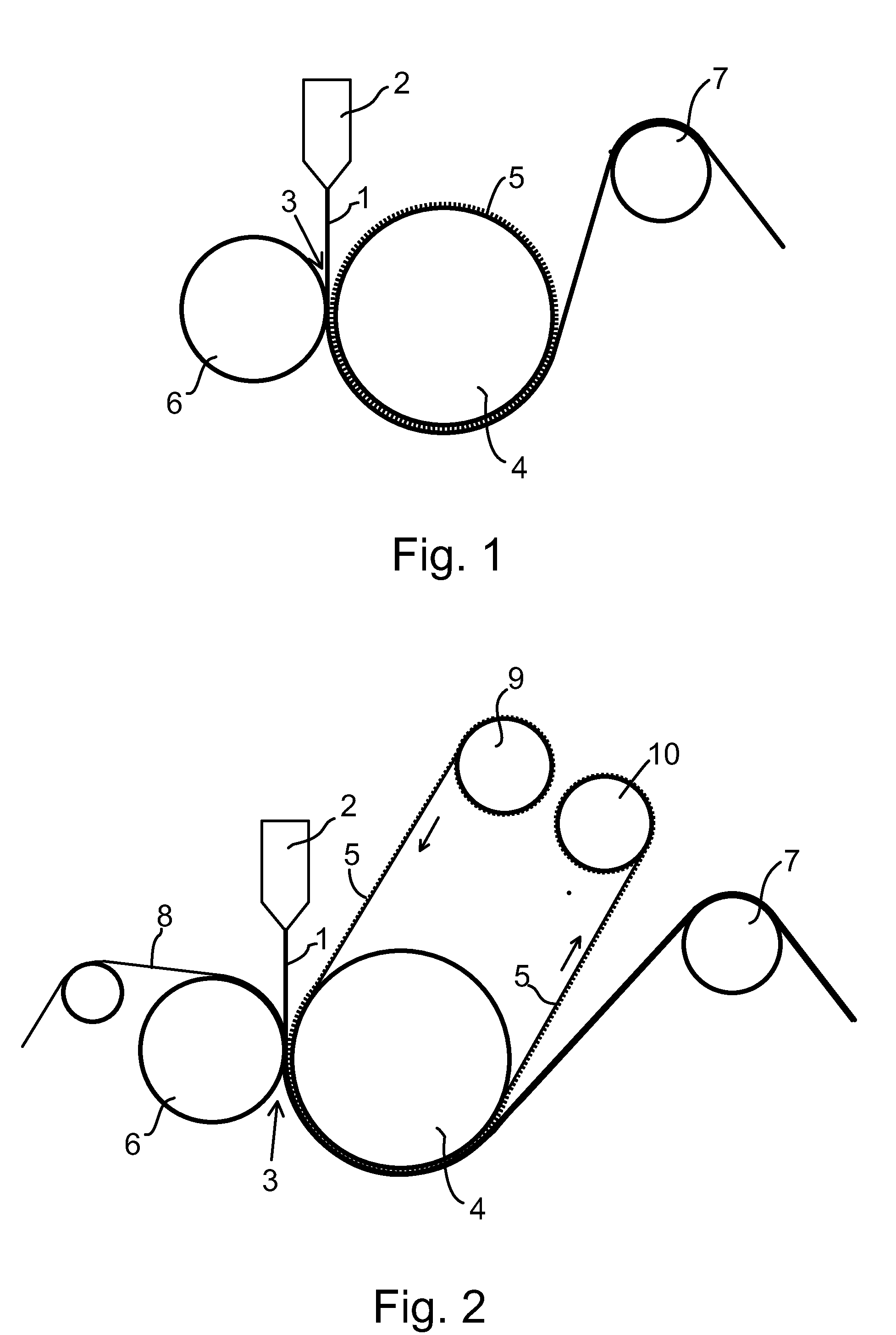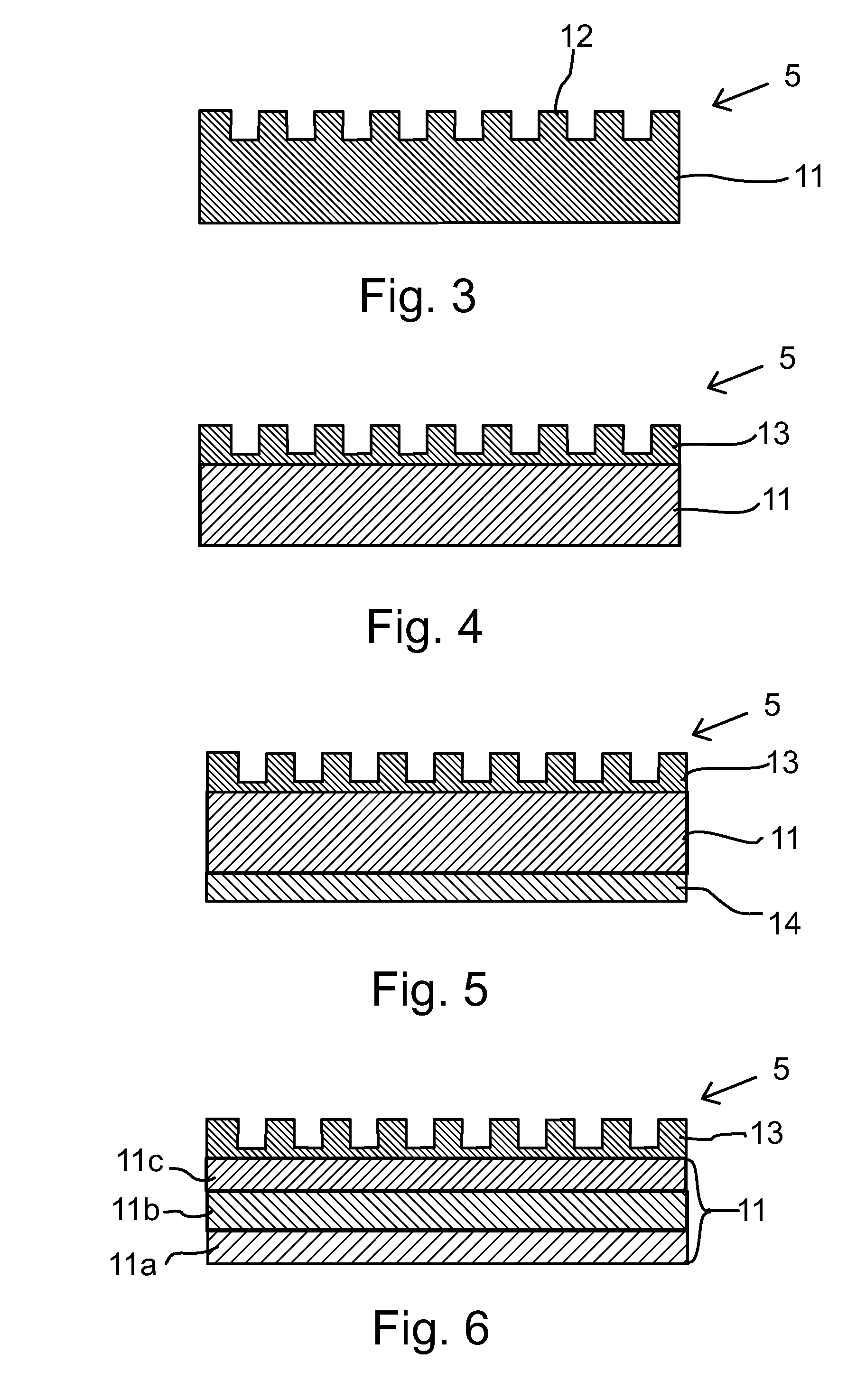Method for producing micro- or nanostructures in polymeric film materials
a polymeric film and nano-structure technology, applied in the direction of filament/thread forming, other domestic articles, optical articles, etc., can solve the problems of high nip pressure, shorten the life of metallic shims, and too narrow web widths required for continuous roll-to-roll mass production of flexible films, etc., to achieve easy manufacturing and handling of large polymeric master films, and large-scale mass production
- Summary
- Abstract
- Description
- Claims
- Application Information
AI Technical Summary
Benefits of technology
Problems solved by technology
Method used
Image
Examples
example 1
[0058]Extrusion coating of PE (polyethylene, extrusion coating grade, Borealis CA7230) onto carton board (Ensocoat grammage 190 g / m2).
Parameters used in extrusion coating:[0059]web and die width 400 mm[0060]PE coating weigth 35 g / m2[0061]melting temperature 250-300° C.[0062]cooling roller diameter 600 mm, temperature 15° C.[0063]nip pressure between cooling roller and rubber pressure roller 3.0-5.0 bar[0064]line speed 50, 60, 80 m / min
[0065]Master film: 50 micrometer thick polyester film with hot embossed diffractive grating, the distance of gratings from each other and the height of the gratings being 100 to 150 nanometers, coated with high refractive index based polymer coating.
Master film, 1000×200 mm, was taped on chill roll, diffractive grating towards the rubber pressure roller.
Results: diffractive gratings were copied equally well onto PE extruded on the carton board with all used line speeds, melting temperatures and nip pressures.
PUM
| Property | Measurement | Unit |
|---|---|---|
| temperature | aaaaa | aaaaa |
| pressure | aaaaa | aaaaa |
| speed | aaaaa | aaaaa |
Abstract
Description
Claims
Application Information
 Login to View More
Login to View More - R&D
- Intellectual Property
- Life Sciences
- Materials
- Tech Scout
- Unparalleled Data Quality
- Higher Quality Content
- 60% Fewer Hallucinations
Browse by: Latest US Patents, China's latest patents, Technical Efficacy Thesaurus, Application Domain, Technology Topic, Popular Technical Reports.
© 2025 PatSnap. All rights reserved.Legal|Privacy policy|Modern Slavery Act Transparency Statement|Sitemap|About US| Contact US: help@patsnap.com



